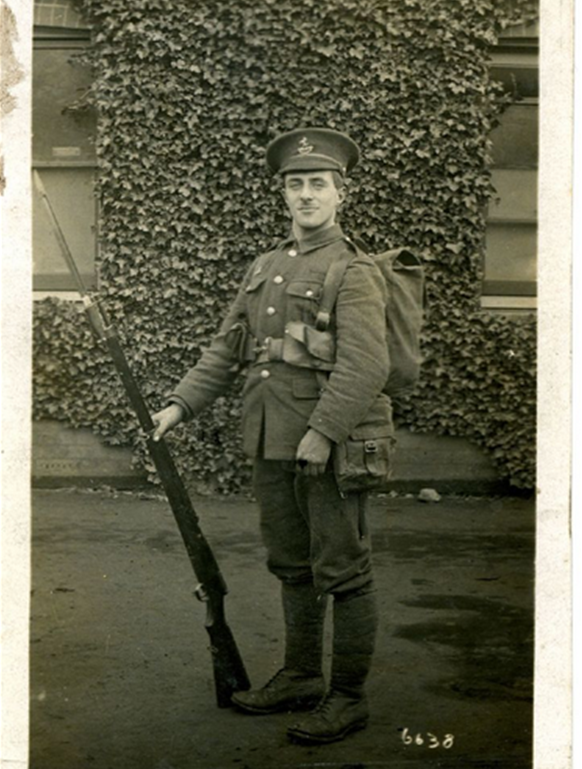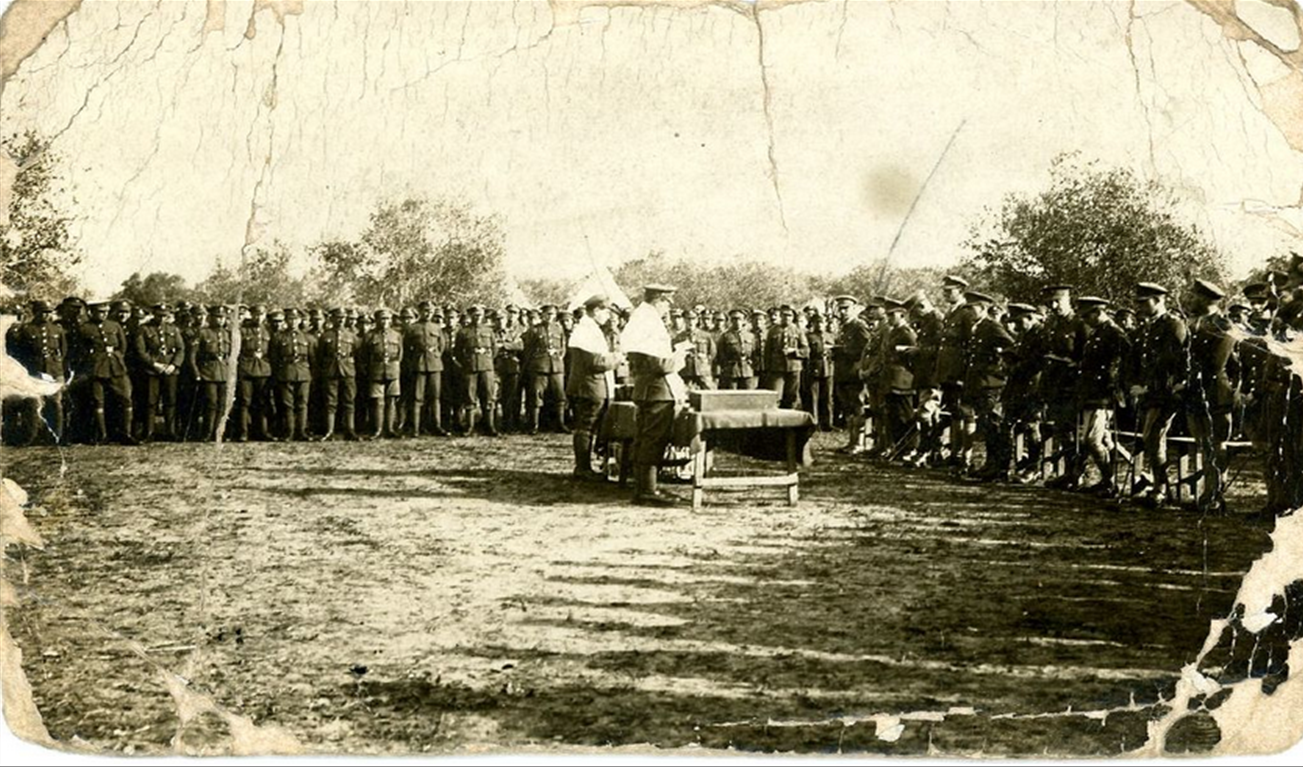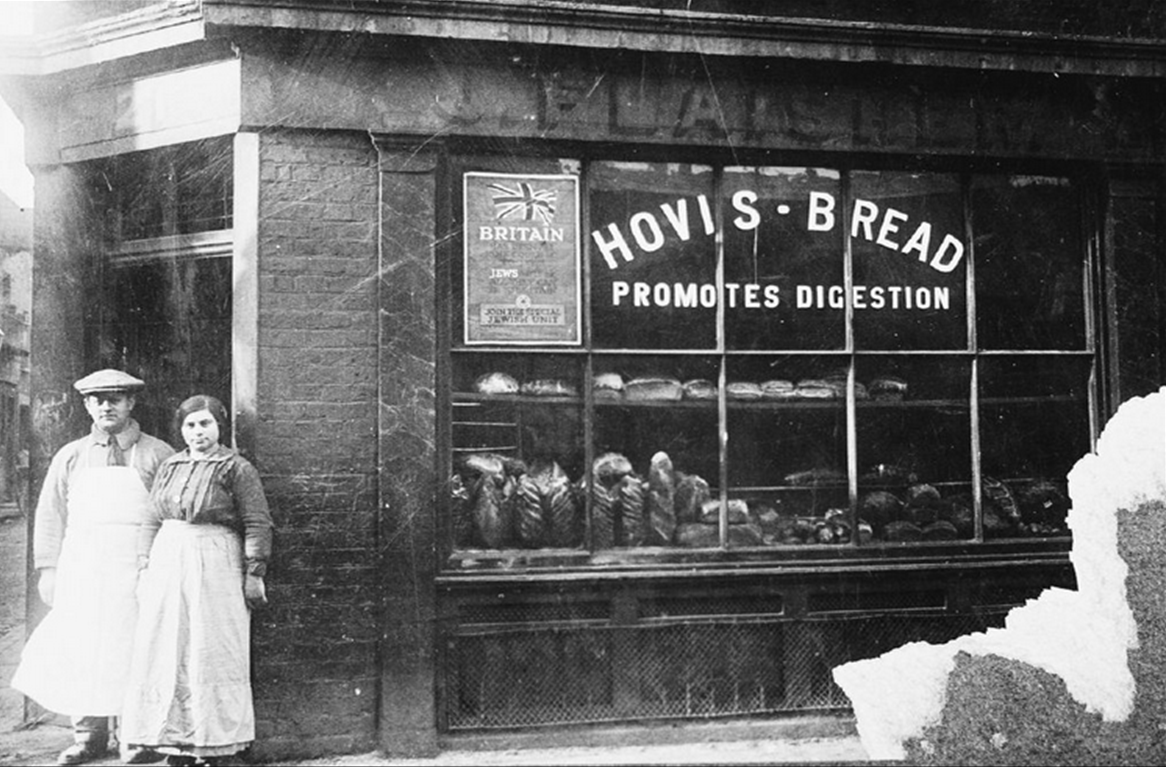The Jewish Museum London and the Jewish Military Museum have opened a new exhibition exploring the Jewish experience of the First World War.
For King and Country? considers the impact of the conflict on the British Jewish population – which stood at almost 300,000 in 1914.
It will run from the 19th March – 10th August 2014.
The outbreak of the war raised questions about immigration, divided loyalties and integration for Britain’s Jews.
Through a series of objects – many of which have not been displayed in public before – the exhibition aims to provide insight into the impact of the war on British Jews, both on the Home Front and on the front line.
The front line
Over 160 letters written by soldier Marcus Segal to his parents form part of the exhibition. He continued to write them until his death in 1917.
 Marcus Segal © Jewish Military Museum
Marcus Segal © Jewish Military Museum
The diary of military nurse Florence Oppenheimer, who served on a hospital ship in the Mediterranean and in Palestine, is one of the objects on display which has never been seen in public before.
After the war, she became a best-selling cookery writer under the name Florence Greenberg.
The hand-written notices of Jewish Chaplain Reverend Aldar are also be on display. During the Battle of Loos, he organised a service for 200 men.
 Military service © Jewish Military Museum
Military service © Jewish Military Museum
Frank de Pass was the first Jewish recipient of the Victoria Cross – Britain’s highest military honour. It was awarded to him after he led an attack on a German trench and carried a wounded comrade back across no-man’s land. De Pass was killed the next day trying to take the same trench.
His Victoria Cross, which was awarded posthumously, is being displayed at the exhibition alongside his uniform.
The objects on display and individual stories presented at the exhibition are being used as a basis to explore wider issues which faced the Jewish community at the time.
For instance, de Pass, is described as being “motivated to serve from a sense of loyalty to his country”. This motivation was not shared with the “new” immigrant families of Britain, who did not feel compelled to serve in the same way as “old” families – including de Pass’ – did.
Insight into such divisions within – and hardships which faced – the Jewish community will be considered through original documents including the Jewish Chronicle newspaper, which called on Jews to fight for Britain at the outbreak of war.
Visitors will also be able to hear the stories of conscientious objectors and learn about the experiences of Russian Jews, who sought to avoid the fighting.
The Home Front
All segments of British society were consumed by the first total war.
 Baker’s shop window © Jewish Museum London
Baker’s shop window © Jewish Museum London
The textile boom in the Jewish East End of London, where soldiers’ uniforms were made, is one element of the Jewish experience of the Home Front that the exhibition will present to visitors.
Jewish schools and boys’ clubs also played an active part in the war effort, with the Jewish Lads Brigade providing soldiers for battle and boys recording the achievements and casualties amongst their alumni.
The political dimension of the conflict, including the rise of Zionism, will also come under study. Other issues, such as the debate between those who believed in integrating Jews across the armed forces and others who believed in segregation and all-Jewish units, will also be presented to visitors.
Rarely seen footage of such a unit, marching through East London, will also be on display.
Community
Over 40,000 Jews from all sides took up arms during the First World War, which challenged the idea of Jewish unity beyond national borders.
To illustrate this, the exhibition displays a pickelhaube, or spiked German helmet, worn by Julius Weinberg of the German Army, whose son came to Britain on the Kinder transport.
The final section of the exhibition explores the legacy of the war in the Jewish community.
A national outpouring of grief at the end of the war led to the mass construction of war memorials across Britain, including in the Jewish community.
The development of the Association of Jewish Ex-Servicemen and Women (AJEX) and their Annual Remembrance Ceremony at the Cenotaph are all, the exhibition states, influenced by the Jewish experience of the First World War.
Also on display is the British Jewry Book of Honour which lists names of Jews who served. It was compiled in part to counter the claims of “anti-Semites who portrayed Jews as ‘shirkers’ during the war”.
The exhibition aims to provide insight into individual Jewish and community experiences of the First World War, whilst tapping into wider issues which affected the Jews and ultimately influenced their post-war position in Britain and further afield.
Source: Jewish Museum London
Posted by: Daniel Barry, Centenary News